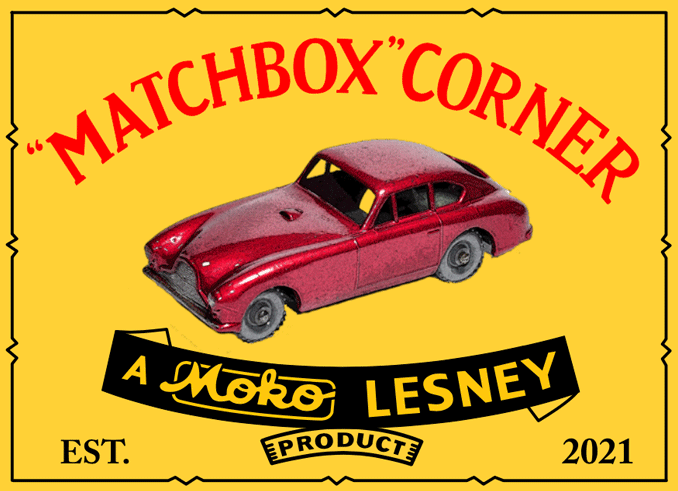Lesney Products Ltd. 1953-1968, the success story
LESlie G. Smith and RodNEY Smith were very good school friends. Even during the Second World War, the two served together in the Royal Navy. In 1947 they founded "Lesney Products".
A mere £600 served them both as start-up capital! For the money they bought the "RIFLEMAN" tavern in Edmonton and some zinc die-casting machines.
In the early years 1947-48, slightly larger vehicle models were produced (Barford Road Roller, Caterpillar Bulldozer and others). These were followed by tin toys (Jumbo the Elephant, Muffin the Mule 1949-50, and the fishing accessories: Bread Bait Press, fishing line cutters and others from 1954.
Jack Odell, who joined Lesney a little later, had a young daughter. In 1952 he made a model of a steamroller for her that was so small that it fit into a matchbox. At that time, there was a rule about the size of toys that children were allowed to bring to school. So Jack fulfilled his daughter's dream and made the little girl happy.
This was the beginning of a great idea to build such small models that would fit into "Matchboxes". By 1953, the first models were already being mass-produced: DIESEL ROAD ROLLER, CEMENT MIXER, LONDON BUS and others. The small version of the royal coach (Small Coronation Coach) was a huge success, selling over 1,000,000 units. No less famous was the Connestoga Covered Wagon, a western carriage. It was even available in two versions: With and without "red barrels". The Regular Wheels series 1-75 soon consisted of 75 models and every year new models and other versions of the vehicles were added. Parallel to this, the Accessory Packs and Major Packs were produced. The KingSize and Models of Yesteryear series also found their enthusiasts. The word MOKO on the first boxes comes from MOSES KOHNSTAM from Nuremberg, who came to England in 1900 to develop the toy industry. He specialised in financing, logistics, storage and packaging of the goods. MOKO Boss was no stranger to the idea of the matchbox, because people in Germany were already trying to offer small toys in such small packaging. The design of the packaging was based on a real matchbox from the Czech company "NORVIC MATCHES" It was not until 1962 that the classic look was abandoned. The RW series was produced until 1968, when the changeover to the SUPERFAST took place (wheels made of slightly softer plastic on very thin spring-loaded axles). In the 60s and 70s Matchbox grew up to a myth and was collected worldwide!
Due to the ever increasing competition from the Far East, the Lesney company had to announce its bankruptcy in 1992 and was sold to TYCO® Inc. and later to Mattel® . Mattel® Inc. is the owner of the brand name MATCHBOX® until today.
